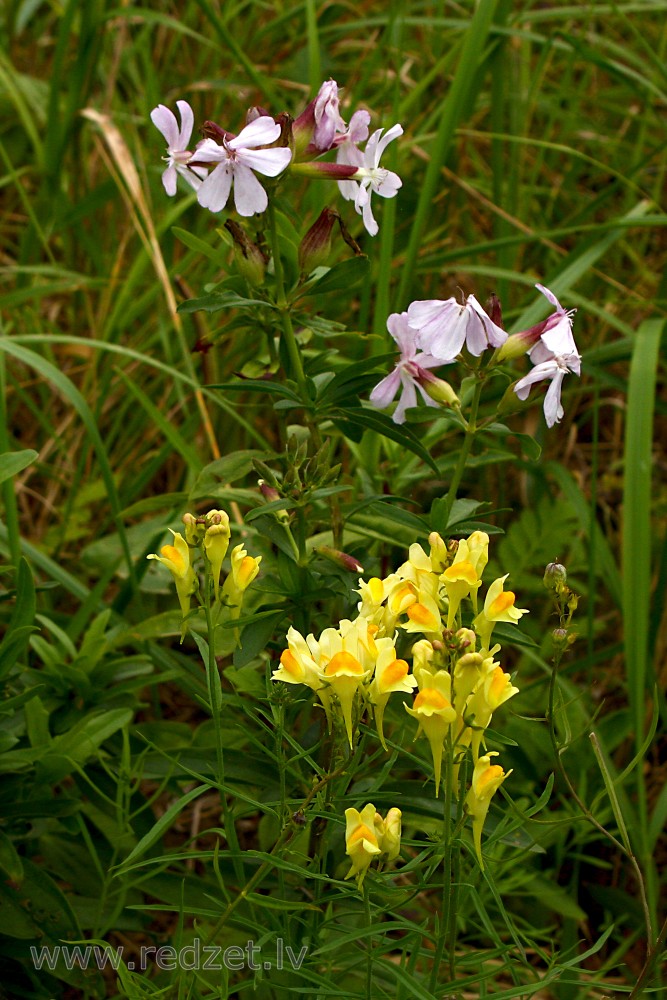(Saponaria officinalis) Common soapwort
Saponaria officinalis is a common perennial plant from the carnation family (Caryophyllaceae). This plant has many common names, including common soapwort, bouncing-bet, crow soap, wild sweet William, and soapweed.There are about 20 species of soapworts altogether.
The scientific name Saponaria is derived from the Latin sapo (stem sapon-) meaning "soap", which, like its common name, refers to its utility in cleaning. From this same Latin word is derived the name of the toxic substance saponin, contained in the roots at levels up to 20 percent when the plant is flowering (Indian soapnuts contain only 15 percent). It produces a lather when in contact with water. The epithet officinalis indicates its medicinal functions. It is a common host plant for some adult moth species, including the white-lined sphinx.
Saponaria officinalis' native range extends throughout Europe, and in Asia to western Siberia. It grows in cool places at low or moderate elevations under hedgerows and along the shoulders of roadways. It can be found in much of North America.
Description
The plants possesses leafy, unbranched stems (often tinged with red). It grows in patches, attaining a height of 70 cm (28 in). The broad, lanceolate, sessile leaves are opposite and between 4 and 12 cm long. Its sweetly scented flowers are radially symmetrical and pink, or sometimes white. Each of the five flat petals have two small scales in the throat of the corolla. They are about 2.5 cm (1 in) wide. They are arranged in dense, terminal clusters on the main stem and its branches. The long tubular calyx has five pointed red teeth.
External use
As its common name implies, it can be used as a very gentle soap, usually in dilute solution. It has historically been used to clean delicate or unique textiles; it has been hypothesized that the plant was used to treat the Shroud of Turin.
A lathery liquid that has the ability to dissolve fats or grease can be procured by boiling the leaves or roots in water. Take a large handful of leaves, bruise and chop them and boil for 30 minutes in 600 ml (20 US fl oz) of water; strain off the liquid and use this as you would washing-up liquid.
In the Romanian village of Șieu-Odorhei, natives call the plant săpunele. It is traditionally used by the villagers as a soap replacement for dry skin.
Internal use
An overdose can cause nausea, diarrhoea and vomiting.[citation needed]
Despite its toxic potential, Saponaria officinalis finds culinary use as an emulsifier in the commercial preparation of tahini, halva and in brewing to create beer with a good "head". In India, the rhizome is used as a galactagogue.
In the Middle East, the root is often used as an additive in the process of making the popular sweet, halvah. The plant is called ‘irq al-ḥalāwah (عرق الحلاوة) in Arabic, çöven in Turkish, and is utilized to stabilize the oils in the mixture or to create a distinctive texture of halvah.
en.wikipedia.org
https://en.wikipedia.org/wiki/Saponaria_officinalis
Continue reading
